Coral Mushrooms: Description of Species
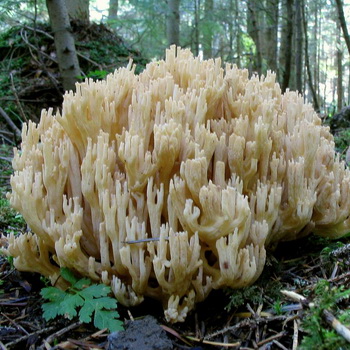
Edible mushrooms, similar to corals with white and yellow bodies
Staghorse (Ramaria botrytis).
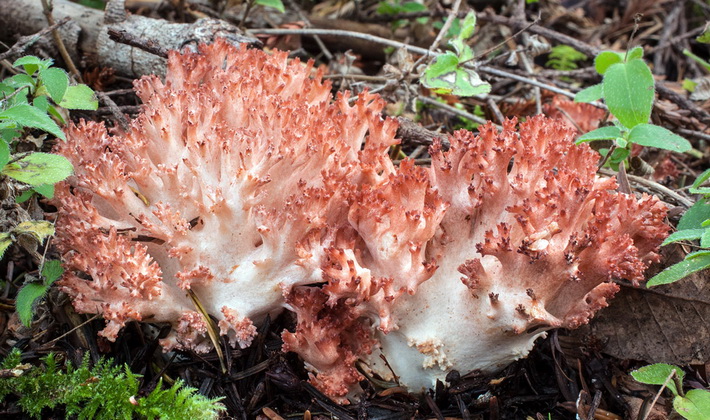
Family: Gomphaeae (Gomphaceae).
Season: Aug. Sept.
Growth: single and in groups.
Description:
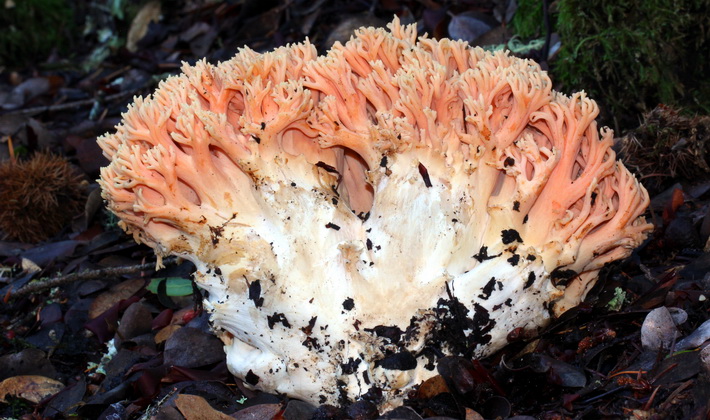
The branches are thick, tapering upwards, their ends are cut off, at first they are reddish, and skin-brown to old age.
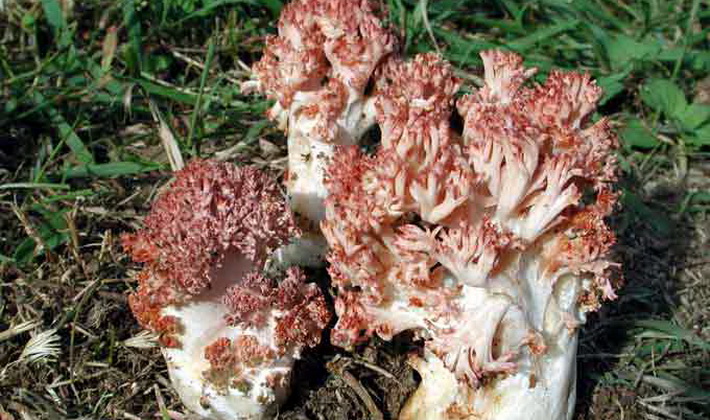
The leg is massive, dense, whitish.
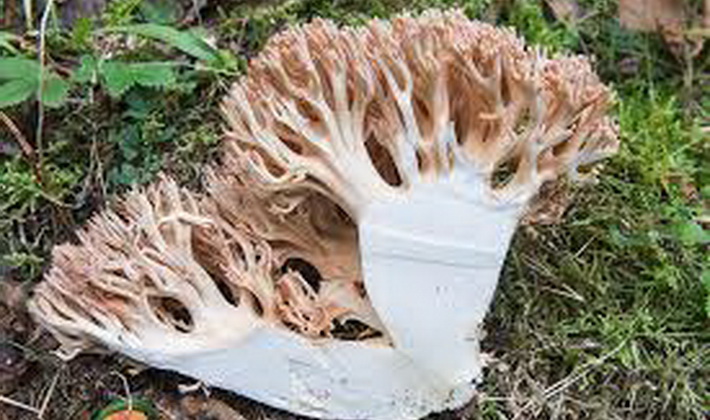
The flesh is brittle, whitish-yellowish, with a pleasant smell and mild taste.
This coral-like mushroom is edible at a young age. Requires preliminary boiling.
Ecology and distribution:
It grows in deciduous and mixed forests, especially near beech trees. It is rare.
Clavulina comb (Clavulina cristata)
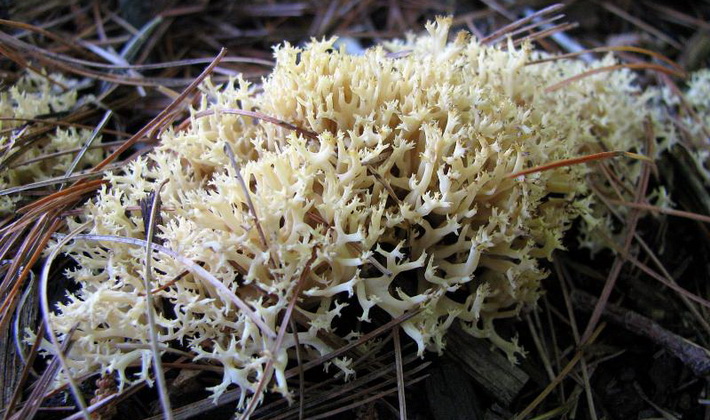
Family: Clavulinaceae (Clavulinaceae)
Season: mid July - October
Growth: singly and in groups
Description:
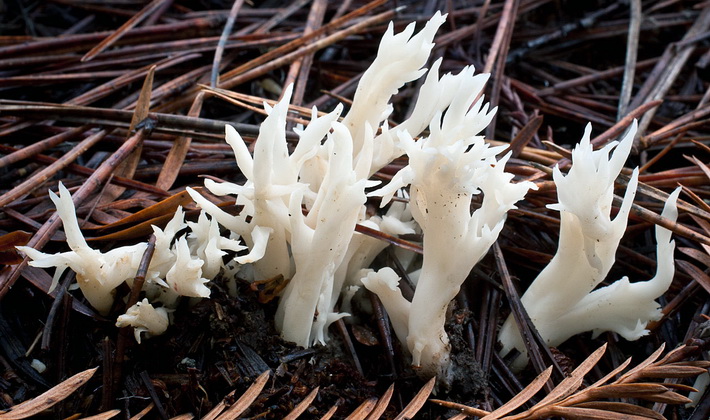
The branches are pointed, with lobed flat crested apices. The branches of this mushroom are like corals of white or cream color.
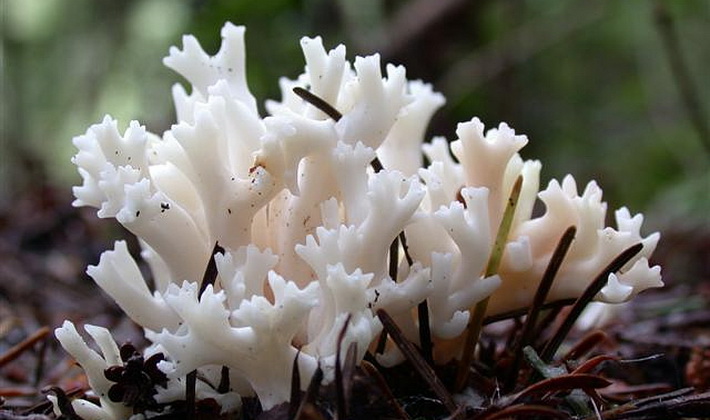
The fruiting body is bushy, branched. The base forms a short, dense pedicle.
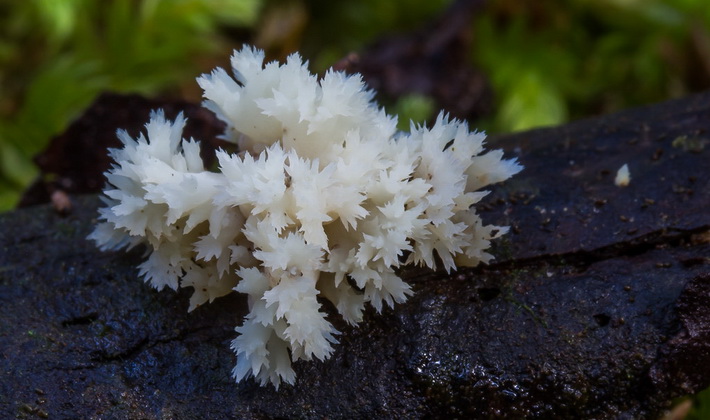
The pulp is fragile, light, without a special smell, sometimes with a bitter aftertaste.
Edible mushroom of low quality.
Ecology and distribution:
It grows in deciduous (with birch), often coniferous and mixed forests, on litter, on soil, in grass.
Curly Sparassis (Sparassis crispa).
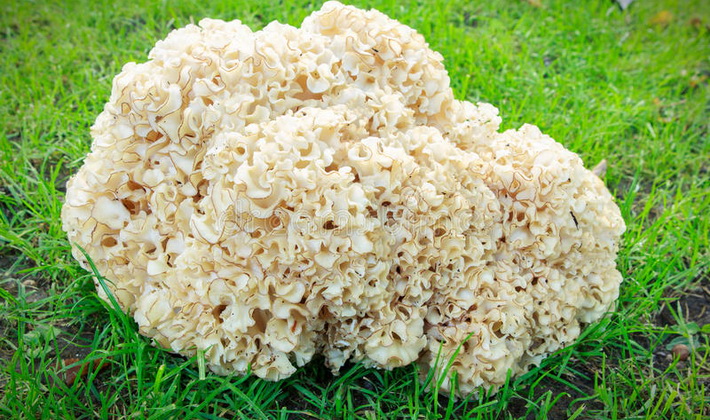
Family: Sparassidaceae (Sparassidaceae).
Season: August - October.
Growth: single-handedly.
Description:
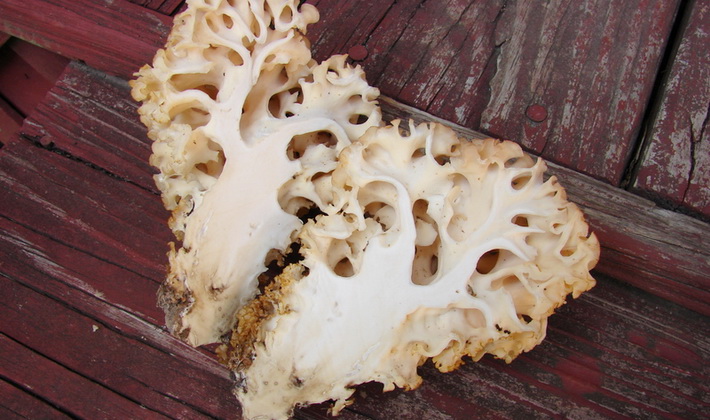
The pulp is brittle, white, with a nutty taste. The leg is thick, deep in the ground, whitish or yellowish.
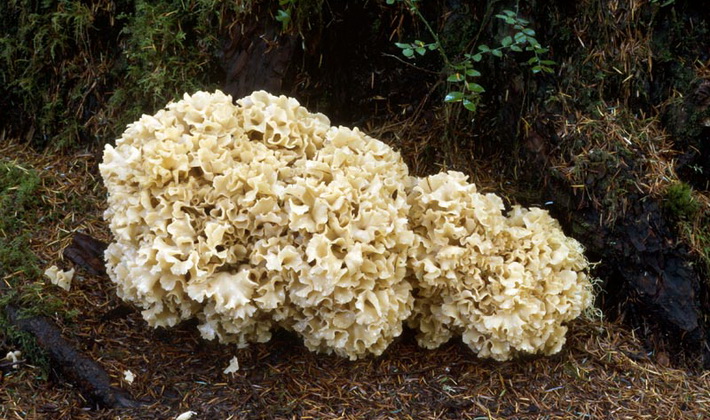
The fruiting body of this fungus as a yellow or white coral, irregularly spherical in shape, consists of many branched wavy plates. One of the surfaces of the plates is spore-bearing.
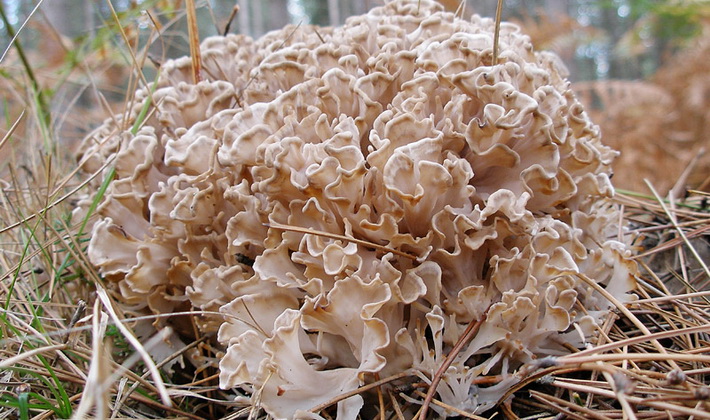
Leg is thick, deep in the ground, whitish or yellowish.
The mushroom is edible only at a young age. Brownish fruit bodies become very stiff.
Ecology and distribution:
It grows on the roots, at the base of trunks, less often on fresh tree stumps of conifers (mainly pine) in old-growth coniferous and coniferous-deciduous forests.
Inedible Coral Mushrooms
Sticky Kalocera (Calocera viscosa).
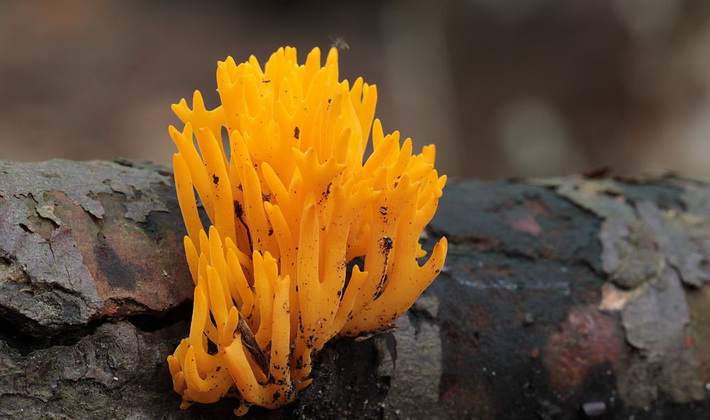
Family: Dacrimycetic (Dacrymycetaceae).
Season: beginning of July - October.
Growth: single and in groups.
Description:

The tips of the twigs are pointed.
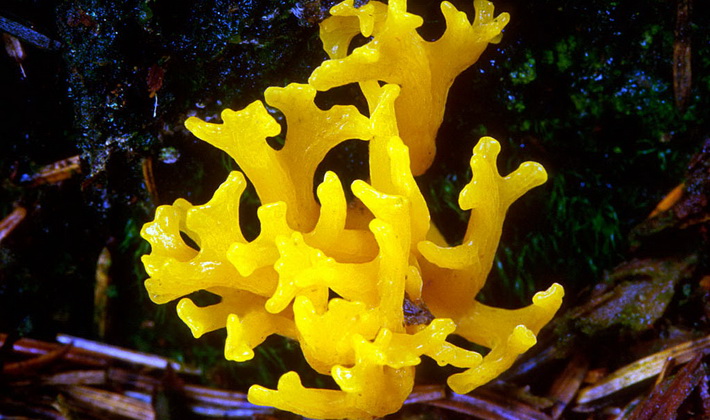
The fruiting body is bushy, slightly branched, dark yellow or orange, slightly sticky.
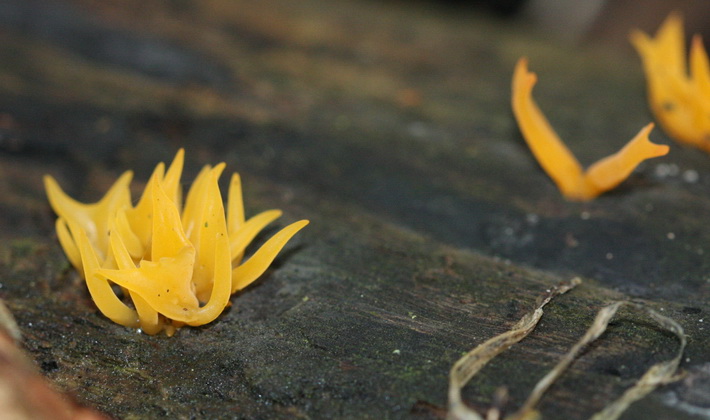
The pulp is dense, rubbery, odorless.
The mushroom is inedible due to the elastic consistency of the pulp.
Ecology and distribution:
Grows on wood immersed in soil, often in coniferous forest.
Xylaria hypoxylon (Xylaria hypoxylon).
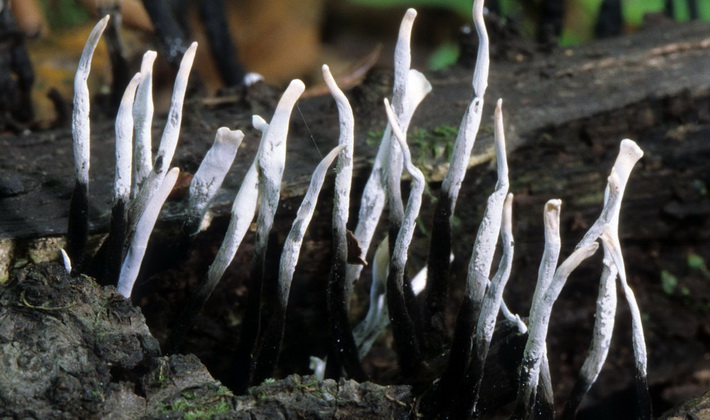
Family: Xylariales (Xylariales).
Season: September - November.
Growth: in groups or in a bundle.
Description:
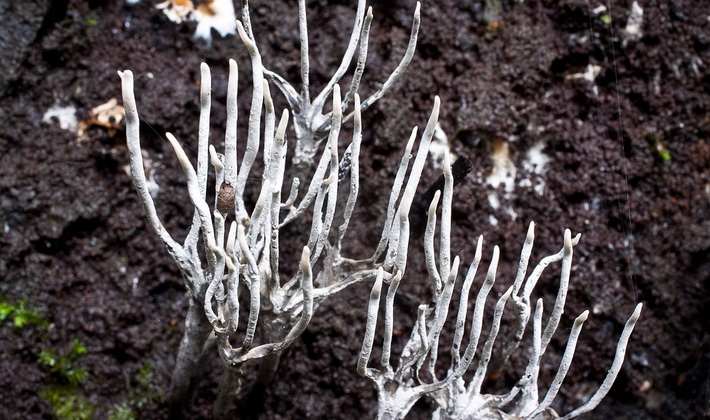
The branches are first spiky, then bifurcated or fan-shaped at the top. The base of the fruiting body is browning.
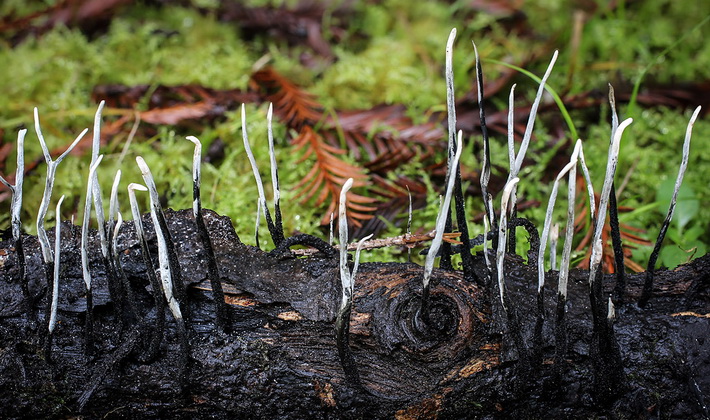
The pulp is dry, hard, white. Late non-branching fruit appear in late autumn. Fruit conidia bodies are bushy.
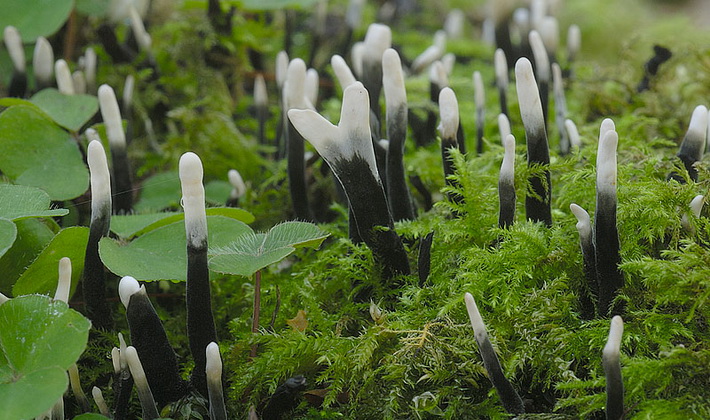
White plaque of conidial spores of the body. Weakly branched form.
The pulp is dry, hard, white.
This coral-like mushroom is inedible due to its solid consistency.
Ecology and distribution:
Grows on stumps, decaying wood of deciduous trees (oak), rarely conifers (spruce).
Horned hornet (Clavulinopsis corniculata).
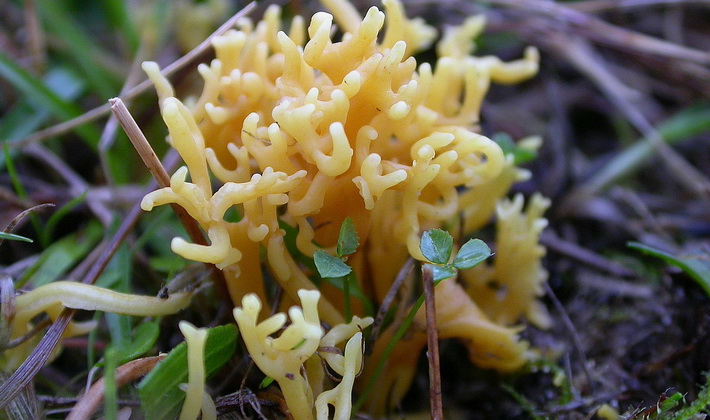
Family: Horned (Clavariaceae).
Season: late fall.
Growth: single and in groups.
Description:
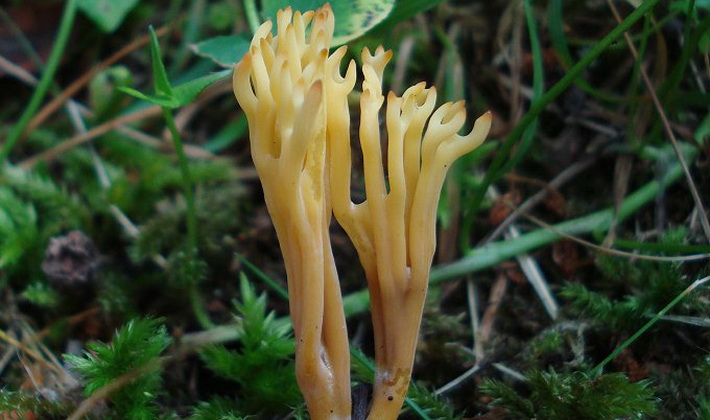
The pulp is brittle, with a powdery odor.
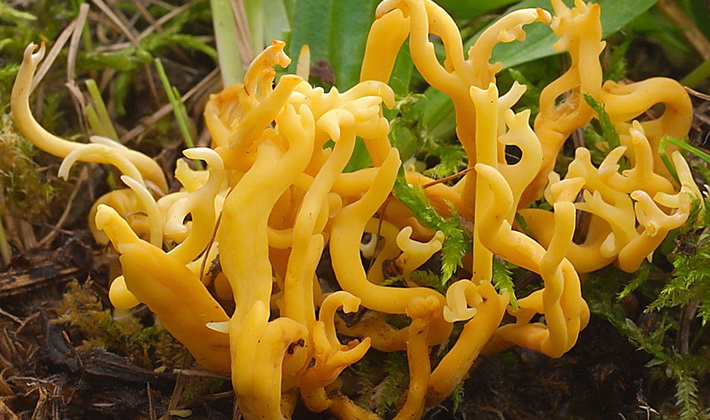
The fruiting body is branching, the color varies from sulfur yellow to red. Spores form on the entire surface of the fruit bodies.
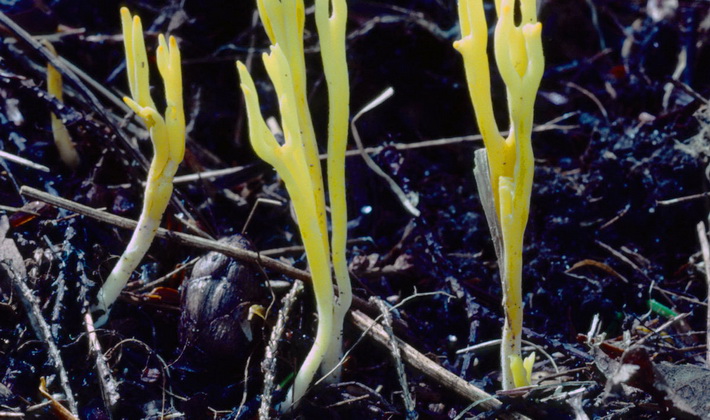
The base is white, with a felt-like surface
This coral mushroom is inedible.
Ecology and distribution:
It grows mainly where there are suede meadows and moorlands, loves coastal thickets of hawthorn and humid woodlands, where there is a lot of ash.
See how mushrooms look like corals in these photos:
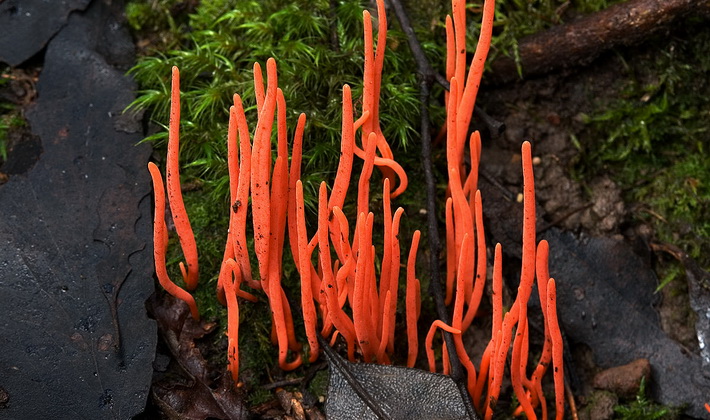
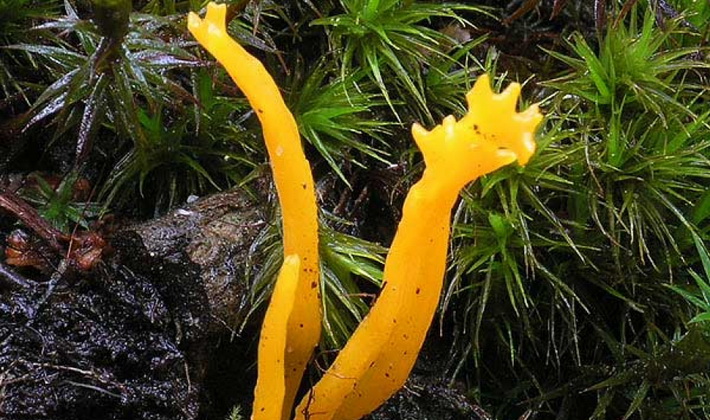
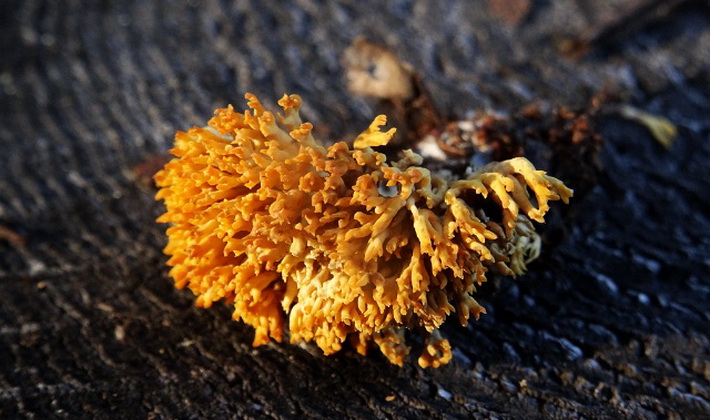
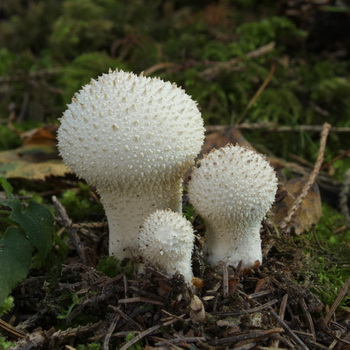
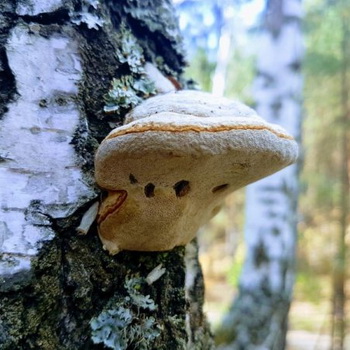
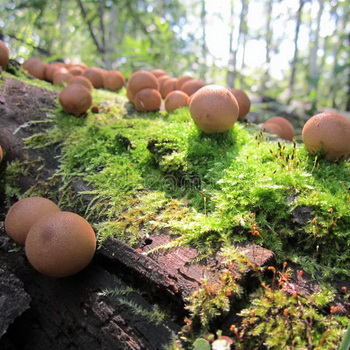
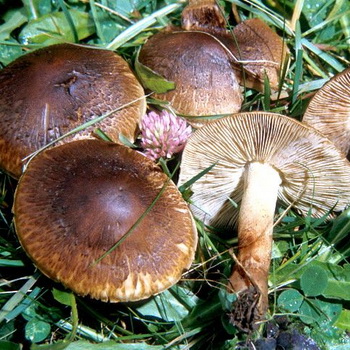
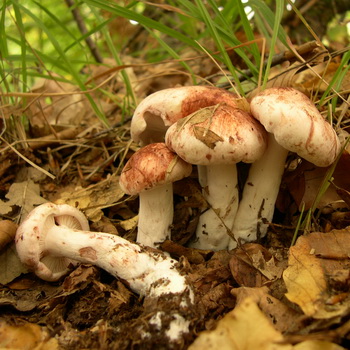
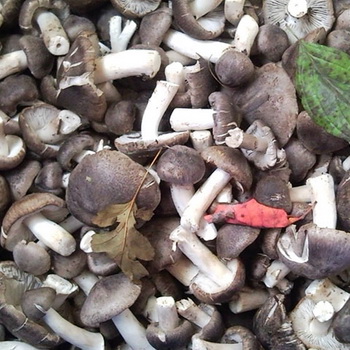
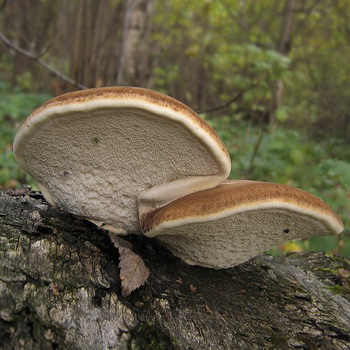
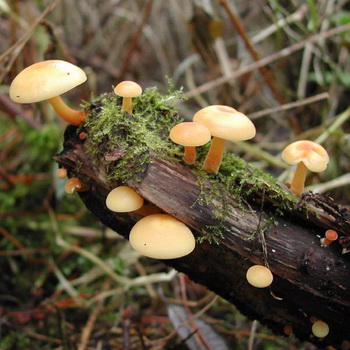
Fine and articles and photos. What else would you like? - for more complete comments about possible properties, in the latest articles on coral completely absent! - there are frankly dangerous ones among them. Still, more about their earthen species and their medicinal properties, especially pine spruce forests. Yeshe! -From the earth but light-shaped. In addition, as in a young spruce fir tree, I found dark-tanned bodies with a rounded upper part of the sk. a hat. Notched! - and as if the blood came out. And, just do it is a wonderful and mysterious world of life for us! - Thank you! Larger and fuller